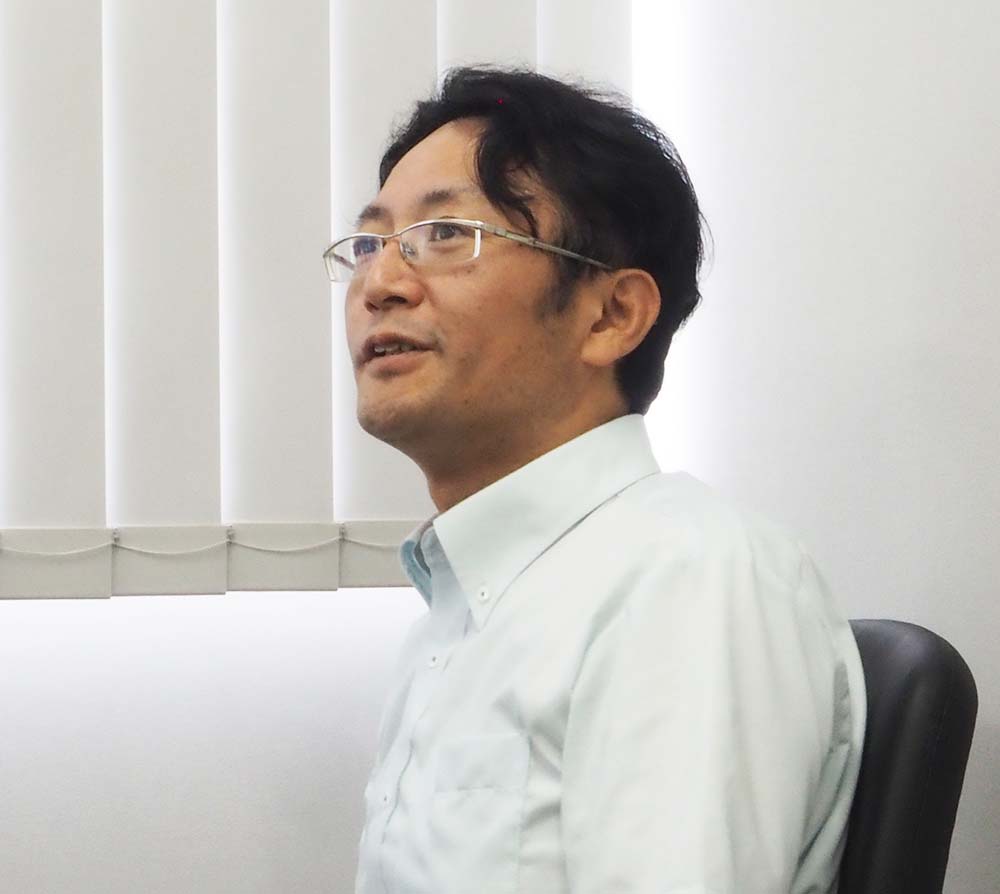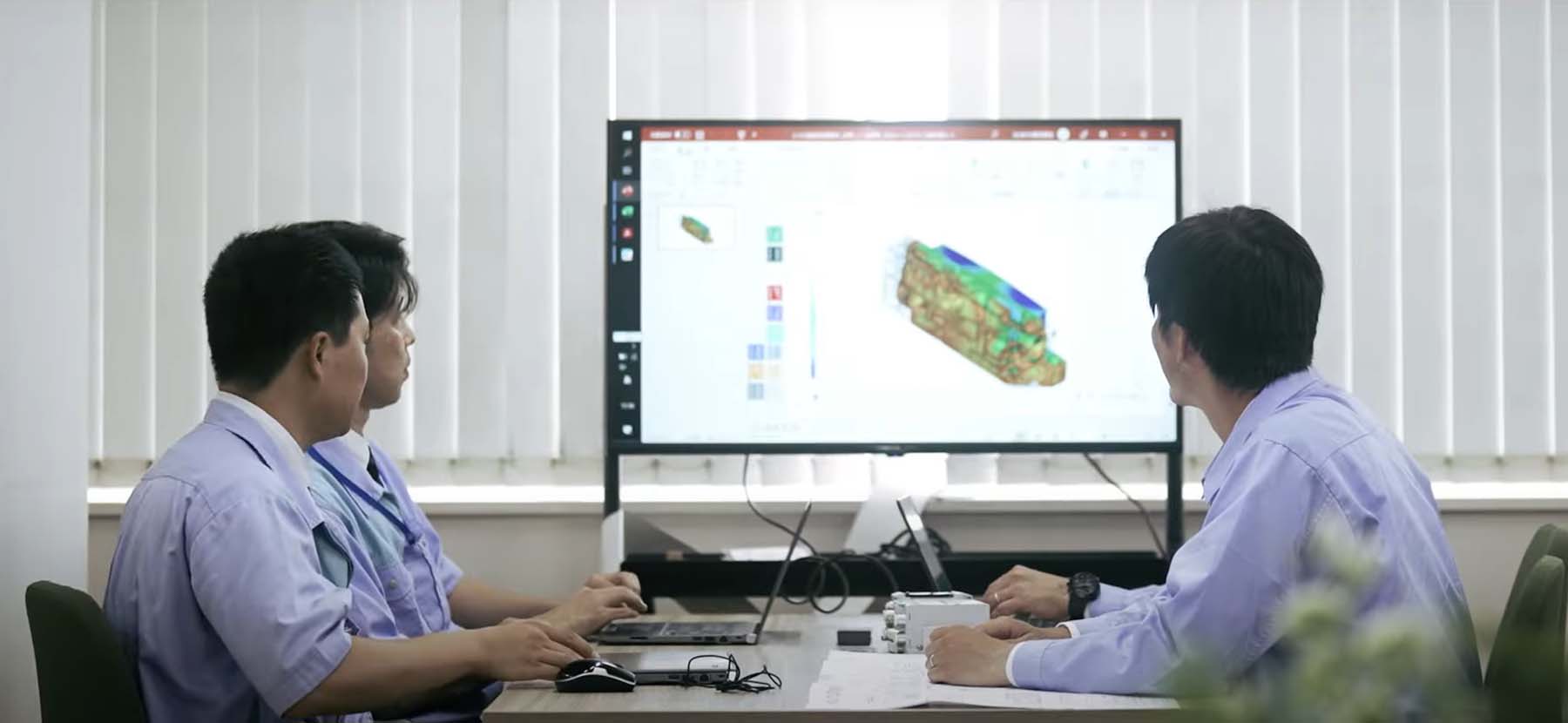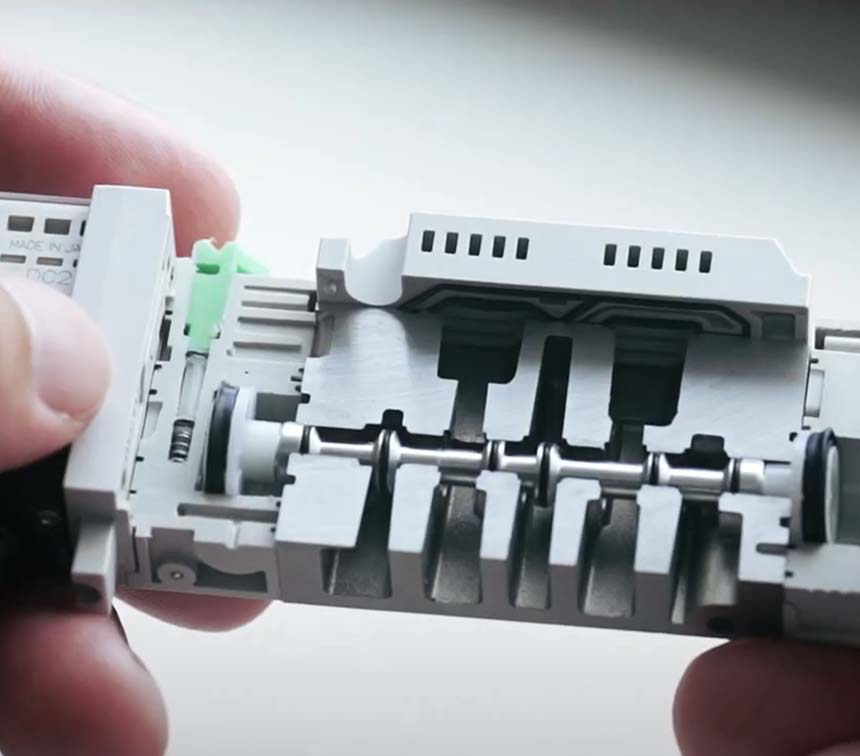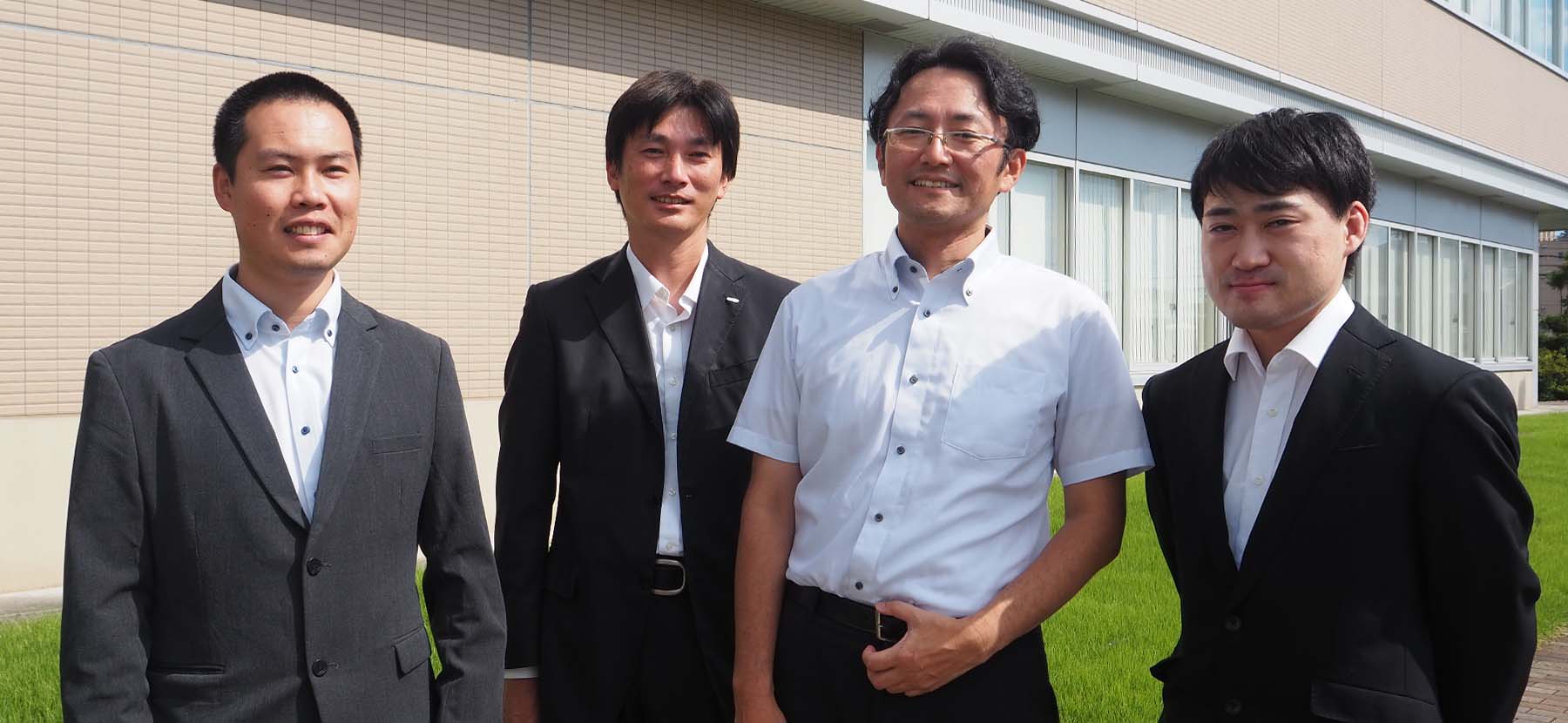Directional Control Valves
Contributing to the energy efficiency of production facilities with highly durable components


THEME
Creating the heart of pneumatic components, with the goal of realizing “facilities that never stop”
Production facilities are accelerating every year, and the number of operations of pneumatic components in use is also on the rise. Actuators operate by switching the flow direction of compressed air, and the directional control valves that control these are often likened to the heart of pneumatic components. Two things are required: the toughness to operate in a stable manner for long periods of time, even with short takt times, high responses, and high frequency; and minimization of equipment downtime due to maintenance.

MISSION
Creating products with powerful potential
Our department is dedicated to understanding the market needs for pneumatic components, conducting elemental research and development, and meeting customer needs through all aspects of our work to commercialize products. In developing these products, we believe it is important to reduce energy consumption by focusing on the energy efficiency of entire production facilities. For example, compressed air, which powers pneumatic systems, is a clean energy source that does not pollute the atmosphere or production environment as oil and gas do in the event of leaks or other losses. But, precisely because it is invisible, attention is not paid to the loss itself. However, this small, invisible loss is a significant loss for a plant as a whole, resulting in unnecessary power consumption. In other words, preventing leaks—invisible losses—reduces power consumption, meaning lower CO2 emissions. Similarly, making durable components that require less frequent replacement leads to reductions in equipment downtime, maintenance and replacement work, and industrial waste, thereby rewriting various production-related practices previously considered common sense.

APPROACH
Received the GOOD DESIGN AWARD 2024 ”TVG series”
Considering “facilities that never stop” in terms of both performance and maintenance
CKD is particularly focused on main valve structures with elastic seals. We have refined our technologies to extend the service life of directional control valves under various operating conditions by improving the quality of packing and resins and the surface properties of sliding surfaces. If durability is prioritized and a metal spool main valve structure is used, there would be no elastic sealing material in the valve, meaning air would leak. The structure of the TVG series was revised significantly based on the concept of “facilities that never stop”.



Operation by wireless communication
The main valve section, which prevents air leaks while reducing wear, has achieved a durability of 120 million cycles, double that of conventional products. Furthermore, joint development with a material manufacturer of resins with low moisture absorption and superior heat resistance has greatly reduced air leaks that occur due to resin deterioration. Newly developed coils that are waterproof feature new magnetic path structures and have twice the magnetic efficiency of conventional coils. By minimizing the amount of current passing through these coils using a PWM control board, power consumption has been reduced by 83% compared to conventional components.
We also focus on reducing facility downtime due to maintenance and servicing. Depending on the location of their installation, intermediate components such as wiring and piping that connect equipment must be pulled in from several meters away. Not only is this physically cumbersome, but in locations where there is a risk of disconnections occurring, installation may be abandoned altogether. The TVG series supports wireless communication, so a physical connection to the PLC is not necessary. Installation close to the workpiece enables shorter piping connecting to the actuator, meaning maintenance time can be reduced. Careful attention was also paid to details such as adding a function to the communication equipment to count the number of operations, a function to prevent screws and gaskets from falling out, and an inlay shape to support positioning during plug-in. Devices operated manually are equipped with covers to prevent their accidental operation, taking into consideration ease of use and operator safety.
VISION
Bringing joy to our customers through our products
CKD is exploring ways to improve the reliability of pneumatic components through evaluations tailored to actual use, such as by assuming that each directional control valve has the same volume as the actuator used by the customer and by installing sensors to constantly monitor the operating status. We are also researching preventive maintenance technologies, such as for equipment failure diagnosis, using detection technologies developed to improve reliability. These technologies are designed to increase productivity in production sites that are becoming increasingly automated. We will continue to improve our products until there are no more outages due to the failure of pneumatic components. And we are committed to providing not only reliability but also solutions to the various problems facing our customers as well as society using the technologies and products we have developed.
